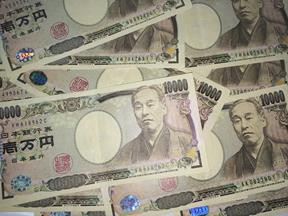Japan's exports increased for the fifth consecutive month in April, buoyed by the depreciating yen, though shipment volumes continued to struggle under soft global demand, according to government data released on Wednesday. The uptick in export value underscores a challenging economic landscape where weak domestic consumption and inflationary pressures persist.
Ministry of Finance data showed Japan's exports rose by 8.3% year-on-year in April, falling short of the 11.1% gain forecasted by analysts in a Reuters poll. This marks an acceleration from the 7.3% growth recorded in March. Imports also saw an 8.3% increase over the same period, swinging from a 5.1% decrease in March, aligning closely with economists' expectations.
Despite these gains, Japan's trade balance swung to a deficit of 462.5 billion yen ($2.96 billion) in April, reversing from a 387 billion yen surplus in March. The trade data reflects the broader economic struggles Japan faces, with export volumes remaining lackluster due to sluggish demand from key trading partners, particularly China, which has yet to demonstrate a robust economic recovery.
"Japan's reliance on exports to offset weak domestic consumption is being tested," said Takashi Miwa, an economist at Nomura Securities. "The weak yen has provided some support, but the overall demand environment remains challenging."
The trade figures come on the heels of data showing Japan's economy contracted by 2% in the first quarter of 2024, with exports of goods and services plummeting by 5%. This contraction underscores the lack of a robust growth engine for the economy, which policymakers are keen to address through various measures, including efforts to achieve sustainable growth driven by higher wages and stable inflation.
Adding to the economic concerns, a Reuters monthly survey revealed that Japanese business morale remained steady in May. However, manufacturers and service-sector firms reported that inflationary pressures, exacerbated by the weak yen, were squeezing profit margins. "Inflation is biting into our profits, and the weak yen is only adding to our costs," said a manager at a major manufacturing firm.
The disappointing export figures also highlighted the partial recovery in demand from Japan's largest markets, the U.S. and China. Despite Beijing's recent stimulus measures aimed at bolstering the economy, the impact on consumer spending and overall demand has been slow to materialize. "China's staggered recovery is a significant drag on Japanese exports," noted Hiroshi Watanabe, a senior economist at Mizuho Research Institute. "While stimulus measures are in place, their effects are not yet fully apparent."
Imports in Japan rebounded at a slower-than-expected pace, growing by 8.3% year-on-year in April, below the anticipated 9% but an improvement over the 4.9% growth seen in March. Domestic consumer spending, a crucial driver of import demand, has remained weak amid ongoing inflationary pressures.
As Japan grapples with these economic challenges, the government and policymakers are focused on strategies to bolster economic resilience. This includes potential shifts in monetary policy by the central bank, which has maintained near-zero interest rates. Achieving a balance between stimulating domestic demand and managing inflation remains a delicate task.






